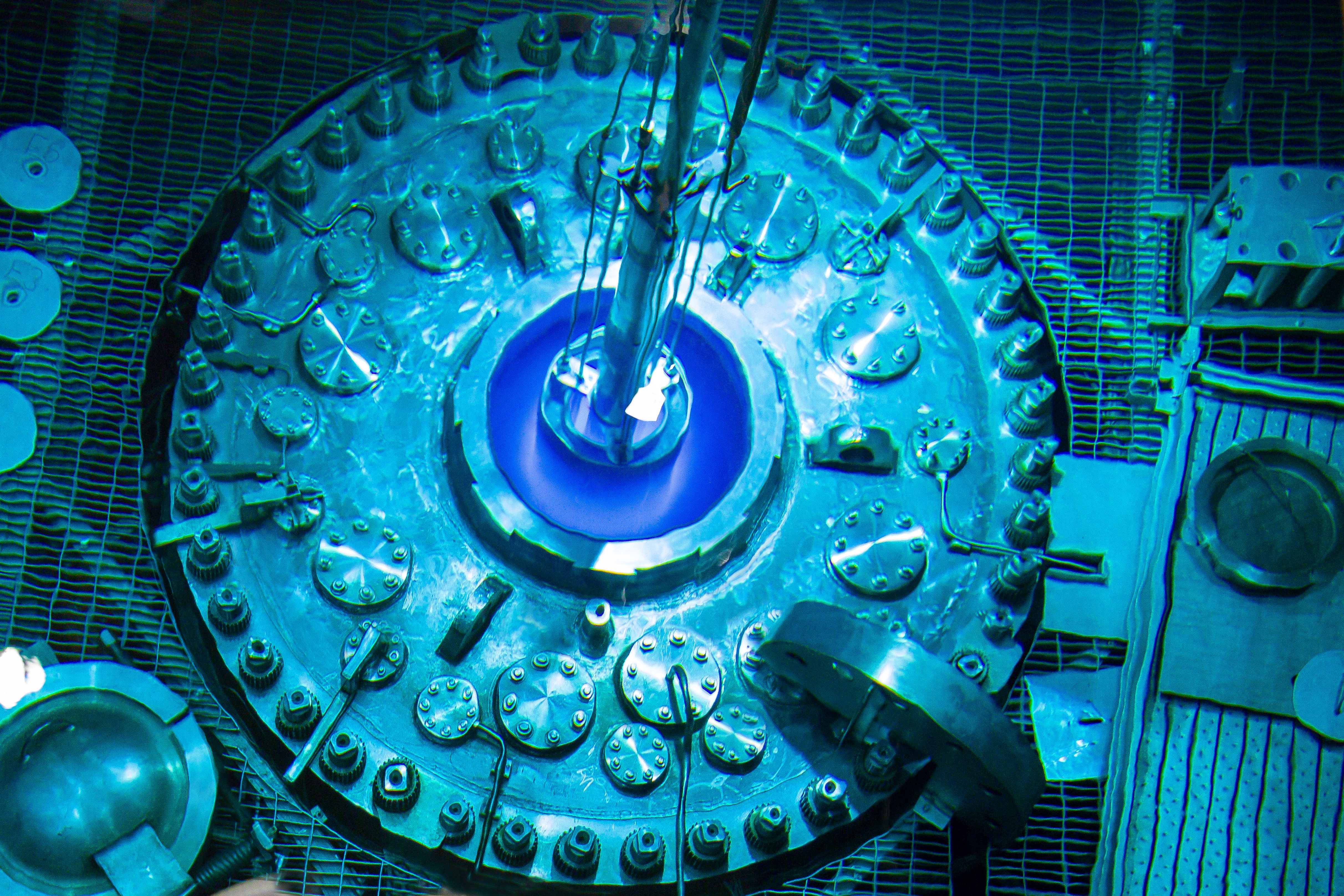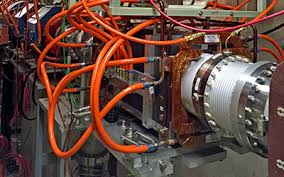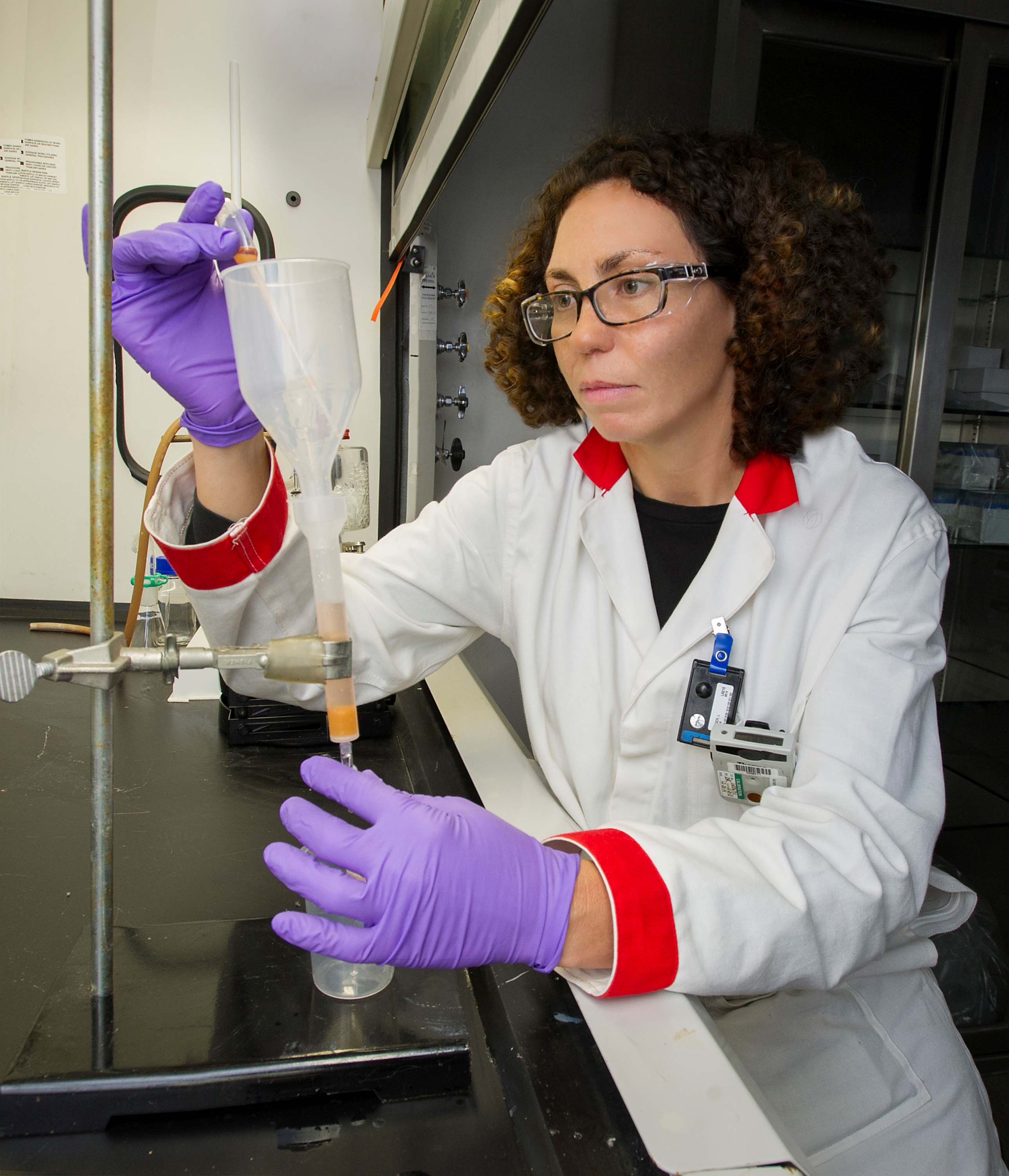The production of isotopes can be very time-consuming and expensive, and supplying the amounts needed for growing demand in the above applications is a tremendous challenge. Numerous approaches for producing isotopes for research and applications are described below.
Production via Reactors
Radioisotopes can be produced in reactors by exposing suitable target materials to the intense reactor neutron flux for an appropriate time. In light-water moderated, swimming pool-type reactors, the compact core is accessible from the top of the pool. Target materials to be irradiated are sealed in capsules, loaded in simple assemblies, and lowered into predetermined core locations for irradiation. Afterward, the irradiated targets are loaded in appropriate shielding containers and transported to hot chemistry labs for processing. In heavy-water moderated, tank-type reactors fueled by uranium, sophisticated assemblies containing numerous target capsules are used for target irradiations. For both approaches, the quality and specific activity of the radioisotopes produced depends on both the target and the irradiation conditions.
A wide range of isotopes are made at reactors, from elements as light as carbon-14 to as heavy as mercury-203, with irradiations ranging from minutes to weeks. For example, Mo-99—the parent to the widely used medical diagnostic radioisotope Tc-99m—is usually produced via neutron-induced fission of targets with U-235 using a 4- to 8-day irradiation time.
To learn about the reactors operating within the NIDC network, visit Reactor Facilities.
Production via Accelerators
Accelerators are used to bombard production targets with beams of charged nuclei that impinge on targets to produce a wide range of isotopes, including many proton-rich nuclei (F-18, C-11) that are not available at reactors. Beams of protons and deuterons are primarily used, but alpha particles and heavier ion beams are also possible in principle. Possible alternatives involve bombarding a primary target to produce neutrons or photons, which then impact the production target to form the isotopes of interest. The range of particle energies and intensities vary between facilities (e.g., 10 - 100 MeV for commercial cyclotrons dedicated for isotope production or up to 200 MeV at some research accelerators). For example, the Brookhaven Linac Isotope Producer (BLIP) at Brookhaven National Laboratory uses a 200 MeV, 140 µA proton beam from the Alternating Gradient Synchrotron to bombard samples to produce Ge-68/Ga-68, Sr-82/Rb-82, as well as Zn-65, Mg-28, Fe-52, and Rb-83. Another is the Isotope Production Facility (IPF) at Los Alamos National Laboratory, which uses the 100 MeV, 250 µA proton beam from the LANSCE linac to produce Ge-68/Ga-68 and Sr-82/Rb-82, as well as smaller amounts of Al-26 and Si-32.
To learn more about the accelerators operating within the NIDC network, visit Accelerator Facilities.
Production via Chemical Separation
Chemical methods have been used for more than 60 years to provide significant quantities of separated stable isotopes. Some of the earliest examples include the separation of uranium isotopes by gaseous diffusion, chemical exchange processes to produce C-13 and N-15, and thermal diffusion and distillation to produce O-18, S-34, S-36, and some isotopes of the rare gases. Major separation techniques include: those that directly exploit the atomic mass of the isotopes, those that exploit slight differences in chemical reaction rates due to different atomic masses, and those based on the—often significantly different—atomic properties of different isotopes.
Distillation is a popular approach based on mass differences. It is effective for separating isotopes with large relative mass differences and is only practical for light elements like He, Li, B, and C.
Gaseous centrifuge is a cost-effective means to separate isotopes based on mass differences that are too heavy for distillation. However, it is necessary to have a suitable gaseous compound of the element for this approach, limiting the possible isotopes. Isotopes of Fe, Ni, Zn, Cd, Ge, Se, Te, W, and U are enriched via gaseous centrifuge. Lasers tuned to certain energies can be used to raise an isotope of interest to an excited atomic state and not affect other isotopes because of their quantum properties. The excitation is followed by a variety of mechanisms to sweep away the other, non-excited isotopes.
To produce commercial quantities of separated isotopes, it is often the case that multiple separation stages are required where the output of one stage feeds the input of a subsequent stage.
Electromagnetic Enrichment and Purification
Electromagnetic separation exploits the mass difference of isotopes to change thƒir deflection in a magnetic field. This low-throughput technique is quite costly but can yield some of the highest purities of separated samples. It is often used in conjunction with other approaches; such as increasing the purity of samples obtained from gaseous diffusion. Devices called calutrons were historically used for electromagnetic purification. This approach can work for almost all elements and is typically used for isotopes of Tl, Pd, Sr, Ca, and the lanthanide series.







